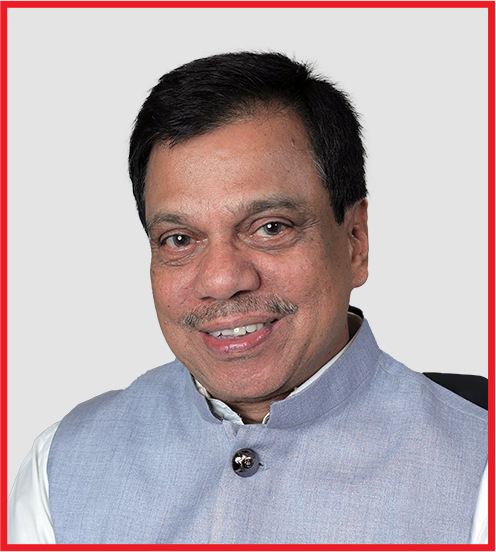‘Asirvad’ as name indicates, started the journey of being benefactor to the society in the year of 2007. Initially concentrating in Tamil Nadu where it took early leads in attending financial needs of marginalized but highly spirited working people, it gradually spread its operational wings to other states meeting the aspirations of struggling mass. Beneficiaries were women folk, with poor and low-income group but with high ambitions. Asirvad nurtured it by providing them ‘Income Generating Product’ Loans so that financial stability could be achieved and the financial stability could be sustained.
In 2015, came the watershed moment in the life of ‘Asirvad Micro Finance Limited’. It became subsidiary of ‘Manappuram Finance Limited’ one of the leading NBFCs and path-breaker in gold loan business in India. Post-take over period saw spurt not only in financial growth of Asirvad but also in operational depth and introduction of vast range of products that catered to the ever- changing needs of working community.
Today, ‘Asirvad’ stands with 10,000 crores AUM by serving 3 million customers spread across all over India.
Nevertheless, the journey continues with urge to serve more people to bring smiles on their face.
Micro Finance Scene in India
Our country has a population of 116.60 Crores and a population growth rate of 1.548%.About 71% live in rural areas, while 29% live in urban areas. India’s diverse economy encompasses traditional village farming, modern agriculture, handcrafts, a wide range of modern industries, and a multitude of services. Services are a major source of economic growth, accounting for more than half of India’s output with less than one third being the labor force. Slightly more than half of the work force is in agriculture, leading the government to articulate a rural economic development programmer that includes creating basic infrastructure to improve the lives of the rural poor and boost economic performance.
The government has relaxed controls on foreign trade and investment. Higher limits on foreign direct investment were permitted in a few key sectors, such as telecommunications. However, tariff spikes in sensitive categories, like agriculture and incremental progress on economic reforms still hinder foreign access to India’s vast and growing market.

The economy has posted an average growth rate of more than 7% in the decade since 1997, reducing poverty by about 10 percentage points. India achieved 8.5% GDP growth in 2006, 9.0% in 2007 and 7.3% in 2008, thereby significantly expanding the manufacturing processes. India is also capitalizing on its large number of English educated people, and is becoming a major exporter of software jobs and services.
Strong growth combined with easy consumer credit, a real estate boom and fast-rising commodity prices fueled inflation concerns from mid-2006 to August 2008. Rising tax revenues and economic expansion helped the government make progress in reducing its fiscal deficit for three straight years before skyrocketing global commodity prices more than doubled the cost of government energy and fertilizer subsidies. The ballooning subsidies amidst slowing growth brought the return of a large fiscal deficit in 2008. In the long run, the huge growing population is fundamentally a social, economic and environmental problem.
The economy was badly affected during the second half of the year caused by a massive financial crisis triggered mainly due to the collapse of American Banks and Insurance companies. The liquidity constraints started showing and a result banks were reluctant to lend to any sector and more particularly to Micro Finance sectors. This has resulted in many of the Micro Finance Institutions finding it difficult to raise resources.
However, things became positive in the last quarter and with RBI pushing in for higher credit off take, India’s GDP bounced back to a respectable level of 7%.Due to the timely intervention by RBI, the economy has started looking up and banks are now looking at funding the Micro Finance Sector, though cautiously.

Trends in the Micro Finance Industry
Between fiscals 2016 and 2018, non-banking financial companies (NBFCs) clocked 15% compound annual growth rate (CAGR) in credit, mainly due to the aggressive expansion of their footprint and the entry of numerous new players across India. However, non-banks faced headwinds after the IL&FS default in September 2018, followed by a liquidity crisis. Later, funding challenges and the Covid-19 pandemic added to the pressures, curbing growth. Banks benefitted in this milieu and used their surplus liquidity to gain market share in terms of credit in a few key segments. The pandemic brought about a sudden halt in economic activity and slowed down demand for credit in fiscal 2021.
In fiscal 2022, the economy began to reopen, and lockdowns were relaxed after the second wave of the pandemic, leading to normalization of business activities, which drove credit growth in most segments.
Following moderation in credit growth during pandemic, NBFCs were back on track with growth of 16.2% last fiscal. This took the credit outstanding of NBFCs (including HFCs, PFC and REC and excluding HDFC) to Rs 34.8 trillion. CRISIL MI&A Research expects credit growth of 14-16% in the medium term. The primary growth drivers being retail housing loans, personal loans, auto loans and microfinance in the retail segment, and micro, small and medium enterprise (MSME) loans in the wholesale segment. With NBFCs outpacing banks in credit growth the market share of NBFCs is expected to increase by ~200 bps to 25% till fiscal 2026.
NBFCs are expected to continue outpacing banking credit growth with a focus on growing the retail portfolio. Key retail segments supporting in the overall NBFCs with double-digit credit growth between fiscal 2024-26 include micro-finance, retail housing, auto, and gold loans.
Between 2016 and 2018, non-banking financial companies (NBFCs) in India experienced a 15% CAGR in credit growth, largely due to expansion and new players. However, the IL&FS default in 2018, liquidity crisis, and Covid-19 pandemic impacted growth. Banks capitalized on surplus liquidity to gain market share in key segments. The pandemic halted economic activity and slowed credit demand in fiscal 2021. In fiscal 2022, normalization of business activities led to credit growth in most segments. NBFCs returned to growth with a 16.2% growth in fiscal 2022, reaching ~Rs 34.8 trillion. CRISIL MI&A Research predicts credit growth of 14-16% in the medium term, driven by retail housing loans, personal loans, auto loans, microfinance, and micro, small and medium enterprise loans. NBFCs are expected to continue outpacing banking credit growth, focusing on growing their retail portfolio.
The government has relaxed controls on foreign trade and investment. Higher limits on foreign direct investment were permitted in a few key sectors, such as telecommunications. However, tariff spikes in sensitive categories, like agriculture and incremental progress on economic reforms still hinder foreign access to India’s vast and growing market.
Challenge in the Micro Finance Industry
Micro Finance is effectively moving towards a banking type of sector through gradual evolution. Clients are aspiring for large credits for doing scaled up economic activity. Since higher CAR norms are being stipulated by RBI, MFIs need to bring in capital to meet this growing demand of the clients. We need to link the clients with market and technologies. The need for this group is indeed costly as they are scattered and tend to use only tiny loans. Designing of the right products for clients is still a great challenge. To cope with the growing needs the industry is expanding fast and as a result competent human resources is increasingly becoming an issue.


Formal Financial Sector increases support to Micro Finance
Commercial banks both nationalised and private sectors are now increasingly lending to MFIs and apart from giving term loans, these banks are resorting to securitisation, loan syndication and guarantee. In addition, institutions such as SIDBI have continued their lending despite the crisis.
Commercial banks both nationalised and private sectors are now increasingly lending to MFIs and apart from giving term loans, these banks are resorting to securitisation, loan syndication and guarantee. In addition, institutions such as SIDBI have continued their lending despite the crisis.
Industry Overview
With economic revival and unmet demand in rural regions, CRISIL MI&A Research expects the overall MFI portfolio size to reach Rs 5,451 billion by the end of fiscal 2026. CRISIL MI&A Research expects the MFI industry to log 16% CAGR between fiscals 2023 and 2026. Key drivers for the superior growth outlook include increasing penetration into the hinterland and expansion into newer states, faster growth in the rural segment, increase in average ticket size and higher usage of support systems such as credit bureaus. The presence of self-regulatory organisations, such as MFIN and Sa-Dhan, is also expected to support the sustainable growth of the industry going forward. Moreover, household credit is a huge untapped market for the MFI players. The country has seen household credit penetration via MFI loans rising, but it is still on the lower side.
The average loan outstanding per borrower for NBFC-MFIs is expected to rise to Rs. 45,883 in fiscal year 2026, up from Rs. 33,632 in fiscal year 2023, indicating a CAGR of 11%. Concurrently, the number of borrowers for NBFCMFIs is forecasted to reach 52 million in fiscal year 2026, up from 39 million in fiscal year 2023, with a CAGR of 10%.

































